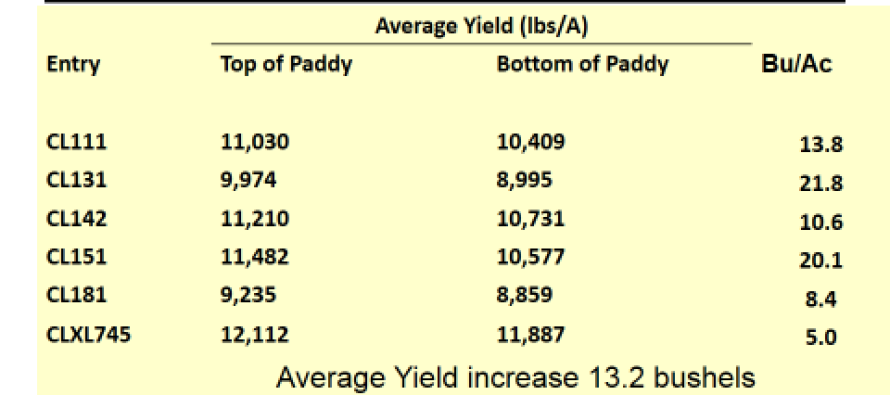Economic Benefits of Properly Managing Multiple Inlet Rice Irrigation

With water being one of the most expensive inputs of the rice producer, utilizing methods to limit the amount of water used makes economic sense.
Adoption of multiple inlet irrigation has allowed producers to reduce water consumption. Water use with multiple inlet has translated into an 18% (fig.2) reduction in water cost over straight levee production practices, while reducing the time for flood establishment, reducing nitrogen loss and improving herbicide activation. But without proper management multiple inlet will not translate to dollar savings. If the multiple inlet field is manage properly, utilizing the proper number of gate valves per paddy, proper height of levee gates, levee seepage is accounted for, the field should flood up evenly from top to bottom at the same time. Producers need to be aware that multiple inlet will not prove profitable if one is over pumpi ng, improper scheduled pumping, or maintaining excessively deep water levels.
MSU, has been investigating the practice of intermittent flooding of rice for the last ten years with significant results. Intermittent flooding allows the paddies to reach a soupy state before being reflooded. In reality only the top portion of the paddy becomes soupy. The 4-year pumping average across two on-farm trials where producers have adopted multiple inlet and the use of intermittent flooding have produced an additional water cost savings of 30%. (fig.2)
Since the introduction of yield monitors producers have reported the top portion of paddies yielding more than the bottom portion. Many contributed this yield difference to the deep water depth on the bottom portion of the paddy. Dr. Massey’s intermittent flood (top pad soupy) work during the 2010-2012 growing season verified the yield on the top portion of the paddy exceeded the bottom by an average of 13.2 bushels per acre.
By having a proper managed multiple inlet field that waters evenly across the field and allowing the flood depth to intermittently become soupy, producers can expect a healthy return on their investment.







Let me tell You a sad story ! There are no comments yet, but You can be first one to comment this article.
Write a comment